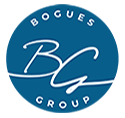
What comes to mind when you hear the word “brand”? Many will think of big, established corporations like Google and Nike. But did you know that you can apply branding techniques to your personal identity?
A personal brand is how an audience perceives a unique set of beliefs or value system, personality, views and more. It is important to differentiate a personal brand from a professional brand. A company’s brand represents the company as a whole and influences an audience’s perception of its products, services, values, etc. Elevating your personal brand requires sharing your experiences and stories, promoting your lifestyle, and establishing/achieving personal goals.
Check out these three keys to elevate your personal brand:
- Define your goals.
In order for your personal brand to reach its full potential, it is essential to clearly define what you want to achieve. Every brand has different goals, and it’s important to figure out what success means to you. Here are a few examples of goals that a personal brand might want to achieve:
- Grow TikTok followers by 100 in one month
- Publish two YouTube videos every week
- Meet 10 new connections within three months
No matter what your goals are for your personal brand, remember to make them SMART: specific, measurable, attainable, relevant, and timely.
- Understand your target audience.
To create effective content that encourages regular engagement, a personal brand must understand its target audience. A target audience is the group of consumers who are intended to see, hear, view, interact with, or buy your product, service or content. This includes certain demographics like age, identity, location and more.For example, a target audience could be young women entrepreneurs, ages 18-30, located in the Southeast region of the US. The more specific you are with your target audience, the easier it will be to understand the type of content to develop and the appropriate channels to use to reach your audience. Regularly review analytics across platforms to see which content performs best and identify the types of people who engage with it. Tracking these points on a monthly or weekly basis will help monitor growth and identify areas of improvement.
- Discover and embrace your differences.
Today’s digital age means your audience is constantly consuming content. So, it’s critical to understand what distinguishes your personal brand apart from the next. A continuous stream of content means things can get overlooked when it’s too similar to what others in your sector are doing. Consumers are more likely to remain engaged and interested in your products and services if your content highlights and embraces the differences your brand brings to the conversation.
Establishing a personal brand is a continuous process refined over time through goal-setting, planning, tracking progress and adjusting your approach based on the analytics. Defining your goals, understanding your target audience, and discovering your differences are key in elevating your personal brand. If you’re looking for resources in building a brand, check out Bogues Group’s step-by-step guide, The Complete Brand Builder Workbook. Click the link below to join the waitlist and secure your copy! You’ll be on your way to creating or refreshing your brand, developing exceptional PR and marketing materials, and launching successful campaigns.

